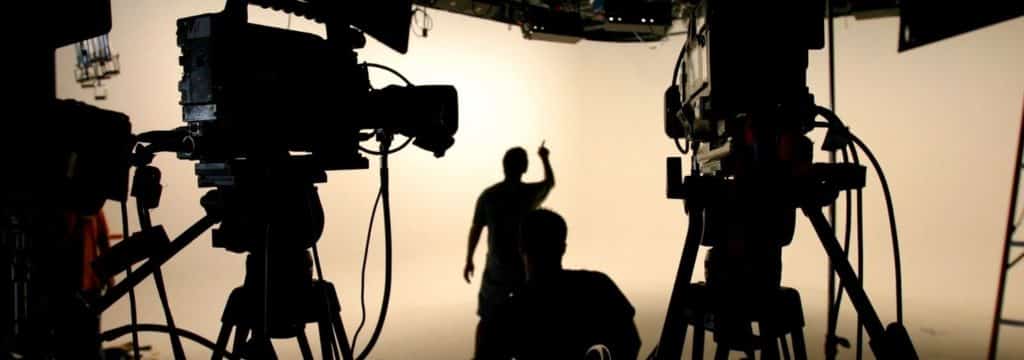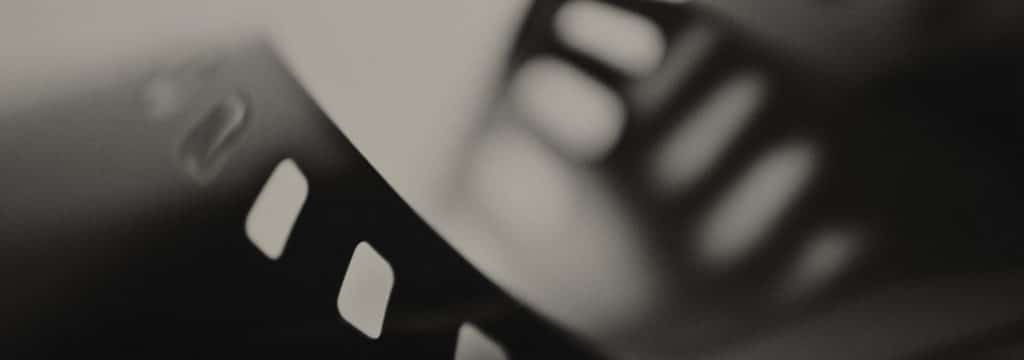When you think of a director, you probably envision someone with a megaphone on set, barking orders and making framing motions with their hands, while the notion of a screenwriter probably brings to mind a typewriter clacking away into the late hours of the night. Over the past decade or so, the role of the “multi-hyphenate” filmmaker in the film industry, specifically the writer-director, has seemingly merged these two roles.
Quentin Tarantino, Adam McKay, and Christopher Nolan are just a few that come to mind.
This might lead you to ask: do film directors always write the script? Is it their responsibility to? We’ll quickly answer those questions and then dig a little deeper to clarify what a director does with the script and what their other responsibilities are during the course of production.

Do Directors Write the Scripts?
The quick answer: No. While it’s a director’s job to bring their own vision to a script and have their own story ideas, the director of a movie is not responsible for writing any of a film’s script. Throughout cinema history, outstanding directors like Ridley Scott, David Fincher, and even the great Alfred Hitchcock have never been credited as a screenwriter for any of the feature films they are most famous for.
Though directors who double as writers have become increasingly popular in the film industry, only 32% of top US grossing films in the last few decades have featured a writer-director. But if most directors don’t write the script, then what does the director do with the script?
Though the director may not be directly involved in writing the script from start to finish, they are quite likely to end up spending more time than anyone with the script. A director’s job is to bring a written work to life in a visual format and they must have an intimate understanding of the screenplay’s themes, motifs, and overall tone to do that effectively.
Can The Director Change the Script?
Absolutely, a director can make any creative changes they like to any aspect of the film, the script included. Directors are often hired or attached for that explicit purpose, to bring their unique sensibilities and style to a written work and to translate it into a visual medium.
Changes can be made at any point in production, even day-of if there’s something that doesn’t feel right on camera. Up to the final cut, a director can also make changes to anything in the script via editing. Even if they don’t hold the almighty pen, the director has final creative say.
Responsibilities of a Film Director
Aside from yelling and hand framing, the primary responsibility of a film director is to serve as the creative leader for a film production on and off set, providing and prescribing a unified creative vision for a film throughout development, production, and post-production.
A good director functions as the head of every department for all aspects of filming and all phases of production. This is why many movies can be traced stylistically back to specific directors; they had a hand in everything from costuming and casting to editing and photography.

1. Development
Assembling a Production Team
During the pre-production process, the a director works with producers to find funding and hire the necessary crew for each department, in addition to working alongside writers to finalize a film’s script. Anything that happens before cameras start rolling can be considered pre-production. A director may be hired on to a project already underway by a producer, but once a director comes on board, they take the helm creatively.
Relevant Celtx Article: Role Call: 8 Essential Film Crew Positions
Writing the Screenplay
The director either writes the screenplay themselves, comes up with an idea that an appropriate writer is then hired for, or is brought on by a producer to a project with an existing script. Whether or not a director has written the screenplay, they’ll need to go through the script at length to determine if there are re-writes and get a feel for the tone of the piece.
It’s important to keep in mind that hierarchically, once a director is hired, it becomes their script and no longer creatively belongs to the screenwriter. The director is hired to bring their own interpretation of a work and to freely revise it to fit their vision. At this point, barring any special relationships or collaborations, the screenwriter’s job is done.
While rare, but not unheard of, some directors will simply go into production with nothing more than an outline or rough draft of a script.
Cast and Crew & Camera
The director works with production to stay within budget while also selecting the right actors and key department heads to get the job done. Many directors will work closely with the same group of actors and crew over multiple projects because their workflow and communication are effective and efficient at bringing the director’s vision to life.
Related Article by Celtx: How to Manage a Film Budget [Top Sheet & Templates Included]
The highest priority crew hires for any director are often the Director of Photography and the Production Designer, who will have tremendous influence in realizing the director’s vision.
2. Production
Working with Actors
Once all the pieces are in place, a director’s role shifts towards the more stereotypical directing tasks. (This is where the megaphone and hand framing come into play) The director works closely with the on-set crew to dictate style and with actors to refine and perfect performance. Although each director’s methods will vary, the goal is the same: to get the best possible performance from each member of the cast.
Managing Creative Departments
Directors must also coordinate camera, sound, wardrobe, and special effects crews. During production, directors must communicate with department heads to ensure that goals and expectations are clear. Keeping lines of communication open ensures that every crew member is doing their job so if an issue arises it can be addressed and resolved in an orderly manner.

3. Post-Production
Editing
The director’s work is hardly finished after they yell “Cut!” on the last day of filming. All that footage has to be compiled and selected as the director works with an editor or team of editors to select what shots make it into the final cut of the film. This is a months-long process that will require constant input, tweaking, testing, and refinements.
Sound and Visual Effects
In collaboration with the editor, the director coordinates with the sound and visual effects teams to ensure that the final cut of the movie sounds and looks on screen the way they envisioned it through development and production.
Again, the director truly has final creative say over the work of every single department. Films are only cohesive when all of their sprawling departments are unified under a singular vision!
Final Cut
If any footage is missing or if scenes need to be added, the director will organize re-shoots and pick-ups as necessary before approving the final cut of the movie. Final approval also involves working with the producers to ensure the people financing the film are happy with the product they funded.
Conclusion
Writing and directing can go hand in hand, but they represent two very different jobs often performed by two very different people. Even those who take on the task of writer-director must be able to compartmentalize each role in order to successfully produce a film.
Through all stages of production, directors are responsible for motivating their team to yield the best possible results. Directors must also be cognizant and respectful of the expectations set forth by the film’s financiers.
If you’re a writer in need of a dedicated director for your project, The Black List is a great place to submit screenplays for review by industry professionals and to get connected with a director or producer interested in taking your script from the page to the screen.
Recommended Celtx Blog: Is It Hard to Become a Professional Screenwriter?
If you’re a writer who was on the fence about directing, perhaps this was the push you’ve been waiting on to take directing into your own hands.
Either way, keep writing, keep directing and keep creating!
